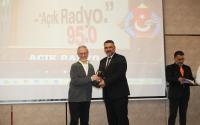9 February 2006Tim Golden
United States military authorities have taken tougher measures to force-feed detainees engaged in hunger strikes at Guantánamo Bay, Cuba, after concluding that some were determined to commit suicide to protest their indefinite confinement, military officials have said.
In recent weeks, the officials said, guards have begun strapping recalcitrant detainees into "restraint chairs," sometimes for hours a day, to feed them through tubes and prevent them from deliberately vomiting afterward. Detainees who refuse to eat have also been placed in isolation for extended periods in what the officials said was an effort to keep them from being encouraged by other hunger strikers.
The measures appear to have had dramatic effects. The chief military spokesman at Guantánamo, Lt. Col. Jeremy M. Martin, said yesterday that the number of detainees on hunger strike had dropped to 4 from 84 at the end of December.
Some officials said the new actions reflected concern at Guantánamo and the Pentagon that the protests were becoming difficult to control and that the death of one or more prisoners could intensify international criticism of the detention center. Colonel Martin said force-feeding was carried out "in a humane and compassionate manner" and only when necessary to keep the prisoners alive. H e said in a statement that "a restraint system to aid detainee feeding" was being used but refused to answer questions about the restraint chairs.
Lawyers who have visited clients in recent weeks criticized the latest measures, particularly the use of the restraint chair, as abusive.
"It is clear that the government has ended the hunger strike through the use of force and through the most brutal and inhumane types of treatment," said Thomas B. Wilner, a lawyer at Shearman & Sterling in Washington, who last week visited the six Kuwaiti detainees he represents. "It is a disgrace."
The lawyers said other measures used to dissuade the hunger strikers included placing them in uncomfortably cold air-conditioned isolation cells, depriving them of "comfort items" like blankets and books and sometimes using riot-control soldiers to compel the prisoners to sit still while long plastic tubes were threaded down their nasal passages and into their stomachs.
Officials of the military and the Defense Department strongly disputed that they were taking punitive measures to break the strike. They said that they were sensitive to the ethical issues raised by feeding the detainees involuntarily and that their procedures were consistent with those of federal prisons in the United States. Those prisons authorize the involuntary treatment of hunger strikers when there is a threat to an inmate's life or health.
"There is a moral question," the assistant secretary of defense for health affairs, Dr. William Winkenwerder Jr., said in an interview. "Do you allow a person to commit suicide? Or do you take steps to protect their health and preserve their life?"
Dr. Winkenwerder said that after a review of the policy on involuntary feeding last summer Pentagon officials came to the basic conclusion that it was ethical to stop the inmates from killing themselves.
"The objective in any circumstance is to protect and sustain a person's life," he said.
Some international medical associations and human rights groups, including the World Medical Association, oppose the involuntary feeding of hunger strikers as coercive.
Lawyers for the detainees, although troubled by what they said were earlier reports of harsh treatment of the hunger strikers, have generally not objected to such actions when necessary to save their clients.
The Guantánamo prison, which is holding some 500 detainees, has been beset by periodic hunger strikes almost since it was established in January 2002 to hold foreign terror suspects. At least one detainee who went on a prolonged hunger strike was involuntarily fed through a nasal tube in 2002, military officials said.
Since last year, the protests have intensified, a sign of what defense lawyers say is the growing desperation of the detainees. In a study released yesterday, two of those lawyers said Pentagon documents indicated that the military had determined that only 45 percent of the detainees had committed some hostile act against the United States or its allies and that only 8 percent were fighters for Al Qaeda.
After dozens of detainees began joining a hunger strike last June, military doctors at Guantánamo asked Pentagon officials to review their policy for such feeding. Around that time, officials said, the Defense Department also began working out procedures to deal with the eventual suicide of one or more detainees, including how and where to bury them if their native countries refused to accept their remains.
"This is just a reality of long-term detention," a Pentagon official said. "It doesn't matter whether you're at Leavenworth or some other military prison. You are going to have to deal with this kind of thing."
Military officials and detainees' lawyers said the primary rationale for the hunger strikes had evolved since last summer. In June and July, they said, the detainees were mostly complaining about their conditions at Guantánamo.
Several lawyers said that military officers there had negotiated with an English-speaking Saudi detainee, Shaker Aamer, who is thought to be a leader of the inmates, and that the detainees had agreed to stop their hunger strike in return for various concessions.
Military officials denied that such negotiations had occurred. But military officials and the lawyers agreed that when another wave of hunger strikes began in early August they were more generally focused on the indefinite nature of the detentions and that it was harder for the authorities there to address.
Colonel Martin said the number of hunger strikers peaked around Sept. 11 at 131, but added that he could not speculate about why other than to note that "hunger striking is an Al Qaeda tactic used to elicit media attention and also to bring pressure on the U.S. government."
Until yesterday, Guantánamo officials had acknowledged only having forcibly restrained detainees to feed them a handful of times. In those cases, the officials said, doctors had restrained detainees on hospital beds using Velcro straps.
Two military officials, who insisted on anonymity because they were not authorized to discuss the question, said that the use of restraint chairs started after it was found that some hunger strikers were deliberately vomiting in their cells after having been tube-fed and that their health was growing precarious.
In a telephone interview yesterday, the manufacturer of the so-called Emergency Restraint Chair, Tom Hogan, said his small Iowa company shipped five $1,150 chairs to Guantánamo on Dec. 5 and 20 additional chairs on Jan. 10, using a military postal address in Virginia. Mr. Hogan said the chairs were typically used in jails, prisons and psychiatric hospitals to deal with violent inmates or patients.
Mr. Hogan said that he did not know how they were used at Guantánamo and that had not been asked how to use them by military representatives.
Detainees' lawyers said they believed that the tougher approach to the hunger strikes was related to the passage in Congress of measure intended to curtail the detainees' access to United States courts.
Federal district courts have put aside most lawyers' motions on the detainees' treatment until questions about applying the measure have been litigated.
"Because of the actions in Congress, the military feels emboldened to take more extreme measures vis-à-vis the hunger strikers," said one lawyer, Sarah Havens of Allen & Overy. "The courts are going to stay out of it now."
Mr. Wilner, who was among the first lawyers to accept clients at Guantánamo and represented them in a case in 2004 before the Supreme Court, said a Kuwaiti detainee, Fawzi al-Odah, told him last week that around Dec. 20, guards began taking away items like shoes, towels and blankets from the hunger strikers.
Mr. Odah also said that lozenges that had been distributed to soothe the hunger strikers' throats had disappeared and that the liquid formula they were given was mixed with other ingredients to cause diarrhea, Mr. Wilner said.
On Jan. 9, Mr. Odah told his lawyers, an officer read him what he described as an order from the Guantánamo commander, Brig. Gen. Jay W. Hood of the Army, saying hunger strikers who refused to drink their liquid formula voluntarily would be strapped into metal chairs and tube-fed.
Mr. Odah said he heard "screams of pain" from a hunger striker in the next cell as a thick tube was inserted into his nose. At the other detainee's urging, Mr. Odah told his lawyers that he planned to end his hunger strike the next day.
Another lawyer, Joshua Colangelo-Bryan, said one of his three Bahraini clients, Jum'ah al-Dossari, told him about 10 days ago that more than half of a group of 34 long-term hunger strikers had abandoned their protest after being strapped in restraint chairs and having their feeding tubes inserted and removed so violently that some bled or fainted.
"He said that during these force feedings too much food was given deliberately, which caused diarrhea and in some cases caused detainees to defecate on themselves," Mr. Colangelo-Bryan added. "Jum'ah understands that officers told the hunger strikers that if they challenged the United States, the United States would challenge them back using these tactics."
http://www.nytimes.com/2006/02/09/politics/09gitmo.html?pagewanted=1






